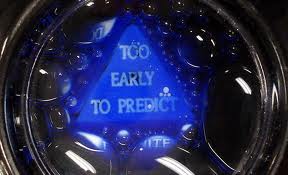Predictive Analytics in Education
 Predictive analytics includes ways of using statistics, modeling and data mining in order to analyze current and historical facts in order to make predictions about future events.
Predictive analytics includes ways of using statistics, modeling and data mining in order to analyze current and historical facts in order to make predictions about future events.
It is something that has been used in business in order to identify risks as well as opportunities and improve decision making. Most references to it will be in the fields of actuarial science, marketing, financial services, insurance, telecommunications, travel, healthcare and others.
It got some press just recently as we discovered that the NSA was searching our online life and using predictive analytics to try to catch "the bad guys."
It is just starting to be used in any significant ways in in higher education. Some people see predictive analytics as a way to improve completion and student retention rates. There are now commercial systems and some schools are building their own ways to mine student data.
These systems might be looking at logins and usage patterns of student services, LMS activity, or content and digital textbook interactions. For example, using recruiting data to make predictions about future enrollments is something that has been done (perhaps without sophisticated software) for the past decade. But using it for predicting retention of students is a much newer application.
One place you are more likely to find predictive analytics today is built into learning management systems. Desire2Learn is an LMS that I am reading about as they have introduced it into their product. They acquired Degree Compass earlier this year as a way to help teachers and also students and advisors make decisions. Desire2Learn calls their tool a "Student Success System" and, since student success is a big concern in colleges, it certainly will sound appealing to customers.
Through predictive analysis, data mined can help an instructor identify overall course risks and individual student progress or lack thereof. Some systems give data visualizations about student engagement in discussions, readings and assignments. If a course is built with valid learning outcomes and assessments for those outcomes, it can show what is working and what is not.
If there are multiple sections of a course and/or historical data on past instances, this can be a way of predicting program success and make necessary adjustments.
One of the desired uses of these analytics is to monitor at-risk students and allow interventions at the proper times.
Trackbacks
Trackback specific URI for this entryThe author does not allow comments to this entry
Comments
No comments